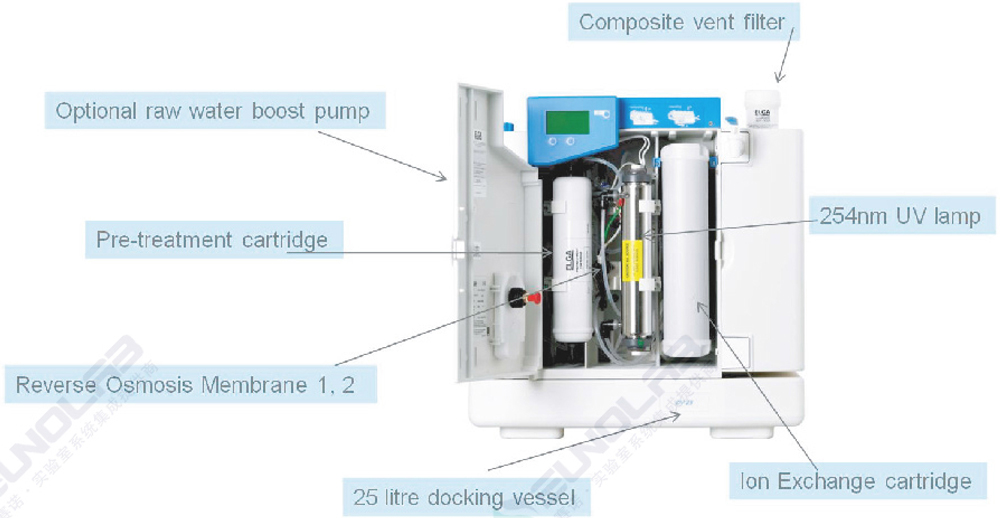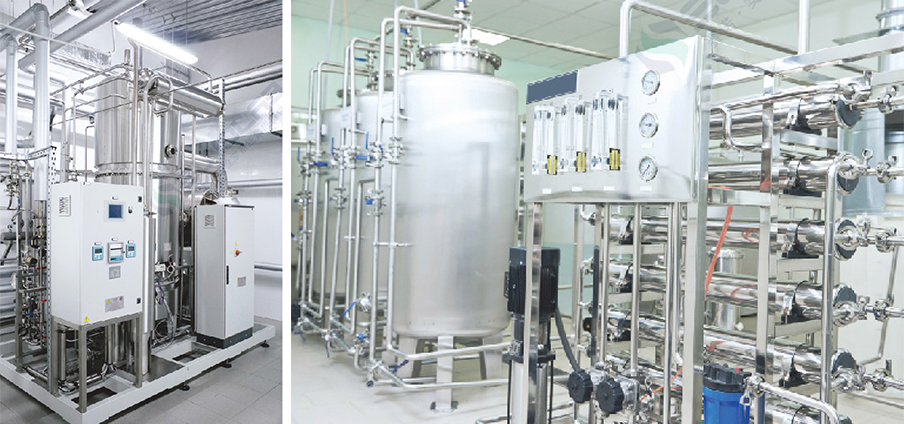
Today,water environment is the most basic environment for most laboratories,occupying avery important position in experiment Water quality often determines the authenticity and repeat abit y of the results of many experiments.Most experts in laboratories. Usually require that concentration of impurity elements and chemical compounds in pure water are in ppb level or even lower.In the laboratory scientific research field, the starting point of purification that people focus on is tap water.If there is dist led water,deionized water or reverse osmosis water in laboratory, people wil then only focus on the process of super purification.
Classification of pure water in laboratory
Level III purewater:Physical purity of level III pure water is generaly less than 50 uS/cm. Distiledwater, double dist led wate (DDW), ordinary deionized water and reverse osmosis water all belong to this level.It is usually made through purification of tap water.Its main applications are in these fields, such as cleaning bottles and dishes, used for high pressure disinfection device, used in artificial environment and used in supply of ultra-pure water purifier.
Level II pure water:Level II pure water has a fuzzy range, often denoted by 5-15M-cm.But it does not necessarily strictly lm it to this range.Ranging of 1-17M-cm can be considered as Level II pure water.It is made through ion exchange or electrodialysis of level III pure water.It's mainly used in ordinary reagents compounding, ordinary chemistry experiment and water supply for ultra-pure water meter.
Level I purewater:Level I pure water refers to water with physical purity more than 18M-cm, we usually take resistivity of 18.2M-cmas the index of level l pure water.Level l pure water must be made through re-purification of level ll pure water or level III pure water by nuclear level ion exchange resin.It is mainly used in analysis experiments requiring high precision and life science experiment with high purity requirements for water.

Laboratory pure water supply mode
Central pure water supply mode refers to setting pure water production device.Water for laboratory use is transported to each water demanding point through water supply pipelines, providing direct access to laboratory pure water or ultrapure water, whether it is a single laboratory or an experimental building.
Advantages
1. Lower running cost, centralized management.
2. Collective use, no possibl ty of machine standing idle.
3. Large production, water is delivered by pipe network many water supply points in one laboratory.
Disadvantages
The system must ensure long-term safe operation otherwise there wil exist water-breaking risk.
Decentralized water supply mode
Decentralized water supply mode refers to setting water purification machine or purified water on each water supply point of laboratory.
Advantages
People have independent access to instruments, and instruments have high util ation ratio.
Disadvantages
1. Operating cost is high, management is decentralized, and consumption cost is relatively higher.
2. Fixed-point installation on desk, fixed water supply points Small production, low flow-rate and low efficiency.
3. If each experimental group purchases separately, then the total amount of investment on this product will be very high,and will result in vacancy rate increasing with the different working conditions of each experimental group, proving unfavorable for the maximization of investment efficiency.
With the development of laboratory equipment, pipe network and centralization of laboratory pure water supply have become the developing direction of largescale experimental buildings.